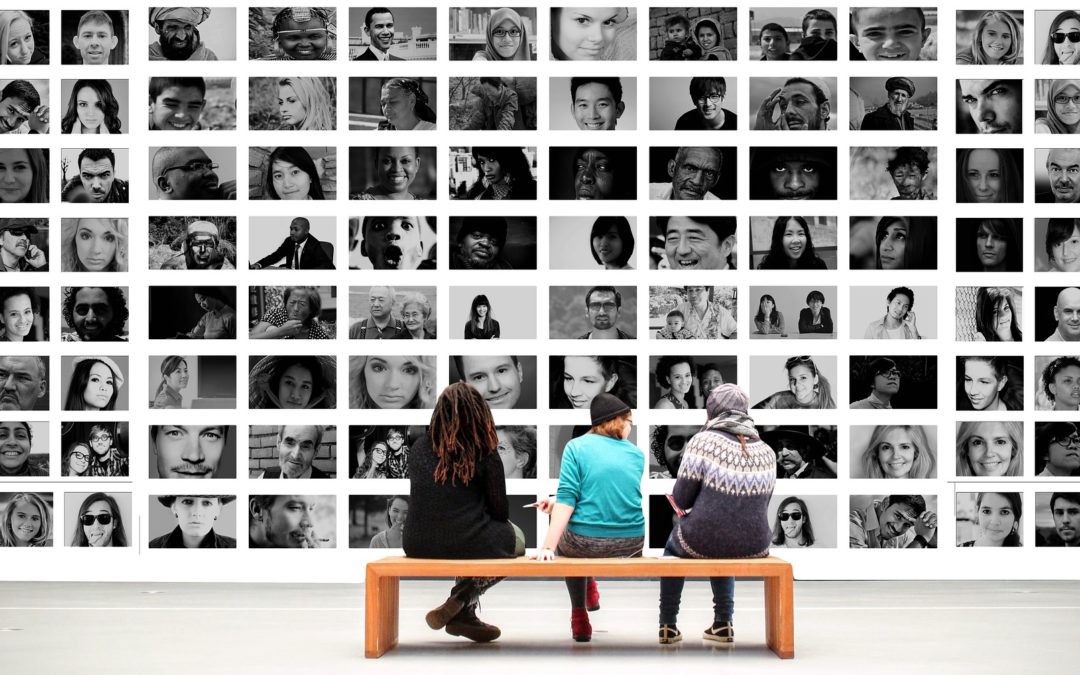With all these titles, categories and labels we are told to use these days, I can’t help wonder how does this make us stronger and unified as people? Seems there is a label for every type of racial, gender, religious, political, socio-economic group. And by constantly focusing on what makes us different, we are forgetting to acknowledge and respect what makes us similar.
Difference without Tolerance brews intolerance and keeps us separated from each other. Difference without Respect keeps us militant and distant. Difference without Understanding creates non-acceptance. Difference without Compassion keeps us divided, not united.
Those who have conducted group therapy sessions understand that group cohesion will go through several stages. It is the group leader’s role to allow the group members to go through these stages in a safe, controlled manner. And although it can get heated at times, the understanding of how to resolve differences is paramount to the successful outcomes for both the group and its members.
Initially, group members come together in a type of “meet and greet” situation where everyone has time to hear what others are about and why they have come to the group. Mostly supportive of each other, group members listen, offer support and give kindly advice to each other. But eventually, the honeymoon comes to an end and the storm begins.
Movement into this next phase of group development has members start to acknowledge their differences with each other and challenge each other. Depending upon the level of psychological / emotional wounding someone has had in their lifetime, this can be traumatizing if not handled properly. Fragmenting of the group into Us vs Them, Colour vs Non-colour, Religion vs Non-religion, Abuser vs Abused and many other dichotomies can leave members with a sense of not belonging, being misunderstood or simply feeling not important enough to bother with. For the group to maintain a sense of unity, it must learn to handle differences with and between people in a healthy, wholesome manner. Yes – to acknowledge and accept differences while maintaining a sense of unity can co-exist!
As we come to understand our reactions and responses to differences, we have opportunity to balance within ourselves conflicting or confusing thoughts, needs, emotions and memories. We begin to learn to live gracefully within the chaos of life. And so the group storm passes and begins to learn tolerance, acceptance, grace, gratitude, respect and honest, heart-felt connection with others. And within themselves.
From this position, group members learn how to replace unhealthy and unhelpful boundaries, emotions, thoughts and actions with those that encourage health, happiness, connection with others and positive self-esteem and self-worth. The past is the past – it does not have to define and rule our present and future. At this point, group members acknowledge how valuable the experience of personal growth and connection has been with the group. They now can understand that the strength of the group comes from the new-found abilities to tolerate, understand, respect and care about themselves and each other with all the similarities and differences brought together. It is a rich tapestry of Life unfolding every day for us to enjoy.
This process is possible when all group members participate and do the work. If they are stuck and refuse to move forward, then the group divides and weakens. This will reinforce all the differences and never afford an opportunity for self-exploration and growth towards a cohesive collective of PEOPLE. The group and its members never truly realize self-actualized personal power and the opportunity to experience “greater together than apart”.
Many folks talk about healing the wounds of the past. Yet more often, these same folks project their anger, hurt, low self-worth and betrayal onto others rather than do the inner work that will free them from this pain. They are stuck in this reality of feeling different and separate from others – how can things really change or improve? And so, the differences outweigh the similarities.
So, what are some similarities amongst all people?
We all:
- Bleed the same blood
- Cry the same tears
- Laugh the same way
- Express joy through our eyes, songs and dances
We all want:
- Someone to love us and someone we can love unconditionally
- Health, happiness and success for our children
- A sense of safety and security
- A sense of purpose in our lives
- Work that is meaningful
- Hope and faith in the world and its people
Maybe it is time to start focusing on the similarities rather than the differences amongst us. What would the world look like if we were to start referring to everyone as “PEOPLE” instead of these labels and categories that are widening the gaps between us? As the late Robert Palmer once sang, “It takes every kind of people, to make the world go round.” It’s something to ponder; it’s something to try.

